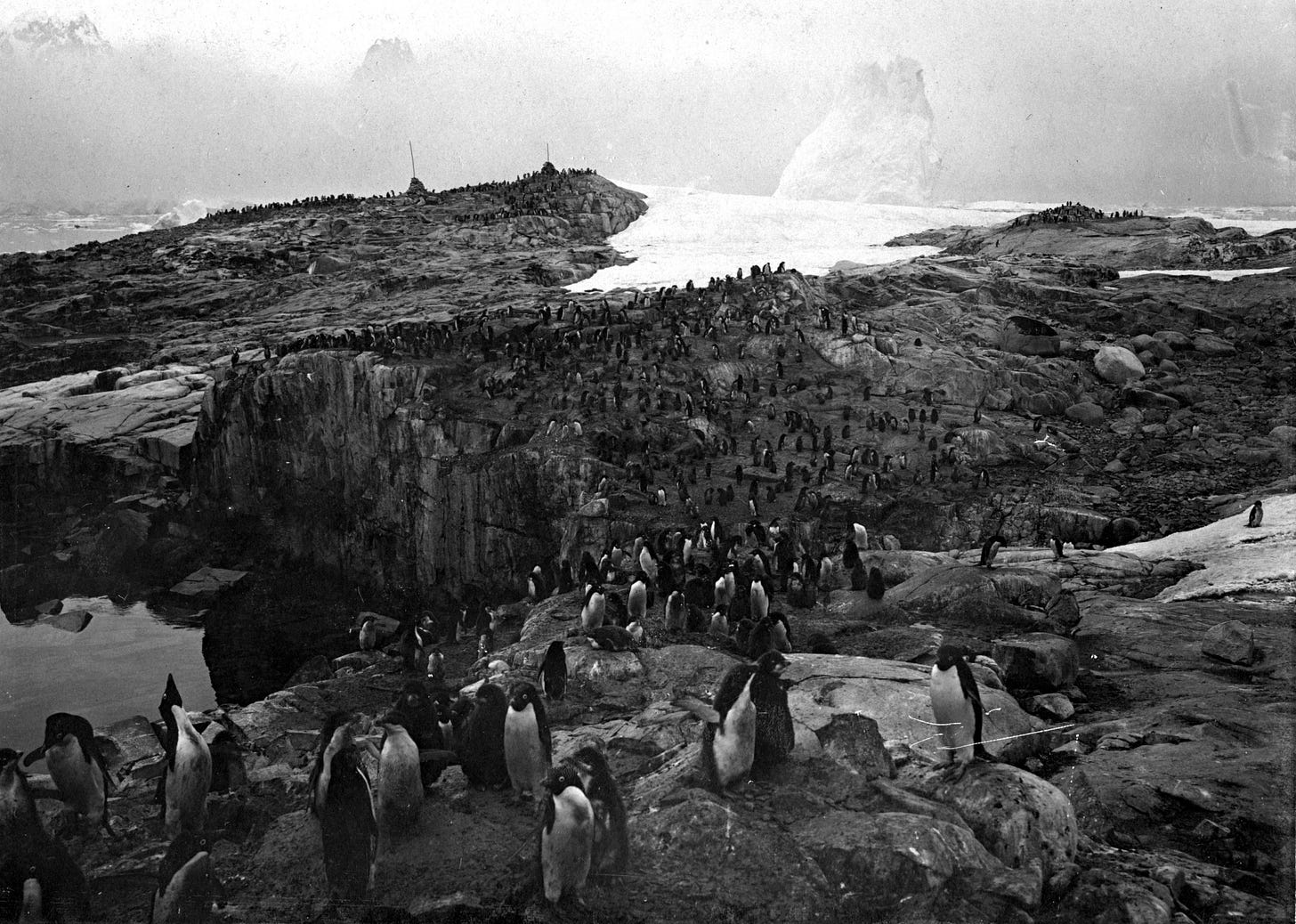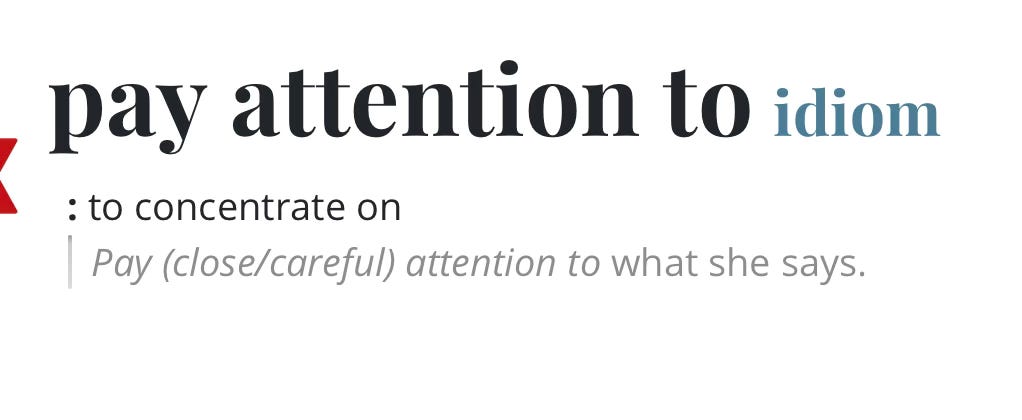Do You Pay Attention?
I see the back cover of a book: I’m asking you to pay attention and view it all as being Alive. With a capital A. and one of the reviews: Complicated, offbeat, and very touching — just like Willow herself. I turn it around and see the title Counting by 7s. I add it to the borrowed book pile, and I read it as the first one.
Now that I have finished it and adapted the key quote, I check the definition of the idiom pay attention. I smile:
The beginning of the book would make you smile as you would probably recall how you ate ice cream last summer: “I don’t even eat ice cream cones. And if I do, I obsess in such a precise way as to prevent even a drop of disorder. But not today. I’m in a public place (…) And my ice-cream cone is a big, drippy mess.” The protagonist, Willow Chance: “named after a cold-climate tree”; a 12-year-old genius-girl, who doesn’t fit into an easily identifiable ethnic category; speaking Vietnamese, which is not her native tongue; obsessed with nature and diagnosing medical conditions; finds it comforting to count in 7s.
The life of Willow is not sweet or creamy, quite the opposite. As she comes home one day, she finds that her mother and father have been killed in a car accident. She is then taken into the care of the fostering system of the state, and is then forced to question her ideals of what friendship, home and family will be for her from now on.
The novel’s language is as sharp and precise as Willow’s thoughts, yet it never loses sight of the emotional undercurrents that drive her.
I'm not sure why this is reassuring, but it is.
I go outside and sit on the steps.
I'm not waiting.
I'm just being.
Time exists only in my mind.
For someone grieving, moving forward is the challenge.
Because after extreme loss, you want to go back.
Maybe that's why I don't calculate anything now. I can only count in the negative space.
I'm on a different planet now.
I only speak when I absolutely have to.
Otherwise, I do my best to be invisible and stay out of the way.
No matter how hard they try, other people do not understand because I'm incapable of communication.
And that is why the deepest form of pain comes out as silence.
We follow Willow’s transformation from a girl defined by routines and rigid logic into a young soul who embraces the unpredictable nature of life.
“Life, I now realise, is just one big trek across a minefield and you never know which step is going to blow you up.”
Her internal conflict, torn between the need for order and the inevitability of change challenges us to question our definitions of control, order, friendship and family.
Willow asks as to pay attention to the plants:
Plants.
They are living, growing, reproducing, pushing and pulling in the ground all around us at all times.
We accept that without even noticing.
If plants made sounds, it would all be different. But they communicate with colour and shape and size and texture.
Willow’s reflection reminds us that a happy life must to be to a great extend a quiet life (Bertnard Russell). Not silent — as at the begining where she is unable to communicate — but quiet in the sense of noticing connections and enjoying various aspects of life, where the majority of transformations happen beneath the surface in ways that aren’t always visible or audible but are nonetheless essential. The comparison she adapts reflects Voltaire’s Candide, where the protagonist concludes that “we must cultivate our garden,” where gardening refers to tending to one's own life, nurturing growth, and finding meaning in personal responsibility and care. Her awareness of the quiet, often unnoticed ways we evolve—just like plants, whose growth is subtle, persistent, and powerful corresponds with the psychological perspective of Carl Rogers, a founder of humanistic psychology, who used the “organismic growth” metaphor, suggesting that people, like plants, have an inherent tendency to grow towards self-actualisation if the environment provides the right conditions—acceptance, empathy, and genuineness.
One of the few things that Willow had said in the last month was that everything in life could be seen in a garden.
According to her, if a plant was in decent soil and had sun and enough water, a bud would at some point show up.
It would start small and very green.
Sometimes bugs ate holes in the exterior of the bud, but if they didn't get too deep into the thing, it would bloom.
And the world would see the flower.
With time, the outer petals would start to wrinkle, beginning at the tips. The shape couldn't hold and the whole thing would open up big and then sloppy.
The rose was now more affected by the wind or the rain or even the hot sun.
The petals would finally just dry up, and break away, falling to the ground.
That left only a round bulb, which was the skull of the thing. And in time that would finally drop as well, returning to the soil.
There was as much of a lesson in that, Willow had explained, as in anything she had been told by anyone about life or death or the stages in between.
What was the rose before it was a rose?
It was the soil and the sky and the rain and the sun.
And where was the rose once it was gone?
It returned, Mai figured, back to the larger whole that surrounds us all.
Goldberg Sloan, through her protagonist, offers a beautifully layered metaphor for the cycles of life, growth, decay, and ultimately, renewal. Willow's reflection frames life as both fragile and resilient—delicate like a bud vulnerable to external forces, yet inevitable in its unfolding and return to the earth. The idea that a rose is not just a rose, but a culmination of soil, sky, rain, and sun, invites us to see identity not as a fixed state, but as part of an interconnected process. Even in decay, the rose doesn’t truly disappear; it transforms, contributing to the same environment that birthed it. Like the rose, we are shaped by our environment—our relationships, challenges, and nurturing forces. Even when life seems to wither, the essence of who we are doesn’t vanish; it disperses into the world, influencing others, and becoming part of a greater continuum.
The bugs that bite, the petals that wrinkle don’t prevent the rose from blooming; they are part of the process. Similarly, our scars and struggles are not detours from our purpose but integral to the beauty and fullness of our lives.

This book somehow reminds me of Thornton Wildrer’s Our Town. Much of the play consists of scenes of ordinary life. A mother makes breakfast for her children, neighbours gossip across their yards, kids walk home from school, and choir practices at church. If you focus just on these moments, you might find it boring and plotless. Taken together, however, they tell a collective story of life.
Since the whole play is about the life cycle of a town, hopefully it’s not a huge spoiler to say that the third act is about death.
A character who dies joins her new companions in the graveyard where they speak about life on the other side. The newly deceased struggles to adapt to life in the cemetery and longs to cross back over. Watching the living, she exclaims, "I can't look at everything hard enough!”
The central message: people often fail to notice the beauty and magic of their ordinary lives. This message is summarised in a monologue with the play's most famous line:
“Do any human beings ever realise life while they live it?”
Most people in Our Town aren’t really trying to change the world, at least by the standards of many classic stories. They don’t have moonshot goals, they aren’t hustling to get ahead. The implied lesson of the play is:
“You should notice and appreciate the beauty of life around you.”
In other words, no matter how you live your life—in pursuit of big goals or not—you still have the choice to pay attention. You can still realise life, or you can let it pass you by. Most people let it pass them by, at least to some degree, and the ultimate takeaway of Our Town is “pay close attention.”
This message of paying attention—of truly SEEING the life around us—has been told countless ways throughout history. But sometimes it takes a story told by a 12-year old Willow, a play, or a work of art to make us FEEL it rather than just understand it.





